Sun news for December 25, 2023. Fun! EarthSky’s C. Alex Young produced this video. He also produces @thesuntoday.
Sun news for December 25, 2023: Flare and filament fun
Today’s top news: The sun kicked it up a notch over the past 24 hours, to give us a fun day of flares and filaments together. Starting at the beginning of the observation period (11 UTC December 24), sunspot group AR3529 released an M2.9 flare. It was followed a few hours later with an M2.6. Almost simultaneous to the M2.9 flare a huge filament north of the M2.9 flare lifted off the sun. Another filament erupted from the eastern limb also nearly simultaneously to the M2.6 flare on the other side of the sun. These filament and flares while nearly simultaneous were coincidental. The M1.1 also had a filament eruption around the same time. But these two events were at the same location, so, in this case, they were related to each other. There were several other smaller, more subtle filament eruptions. Let’s see if the sun has more excitement for us in the coming day!
Last 24 hours: Sun activity reached moderate levels with three M flares. The largest event was an M2.9 at 11:09 TUC on December 24 from AR3529. The region produced an M2.6 at 16:37 UTC. A smaller M1.1 flare came from the southeast limb at 19:21 UTC. All three flares produced radio blackouts over South Africa, South America, and the South Pacific respectfully. The sun has seven active regions on its Earth-facing side.
Next 24 hours: The forecast is a 95% chance for C flares, a 35% chance for M flares, and a 5% chance for X flares.
Next expected CME: A large filament eruption around 11 UTC on December 24 in the northwest produced a coronal mass ejection (CME) that is forecast to graze Earth on December 27. Another, much smaller filament eruption around 15:00 UTC on December 24 is under analysis to determine if it produced a CME with an Earth-directed component. No other Earth-directed CMEs were observed in the available imagery.
Current geomagnetic activity: Earth’s geomagnetic field is quiet at the time of this writing (11 UTC on December 24). Mostly quiet conditions are expected to continue during the rest of today through December 26. Active to G1 (minor) storm levels are expected December 27 due to the glancing blow of a CME from December 24.
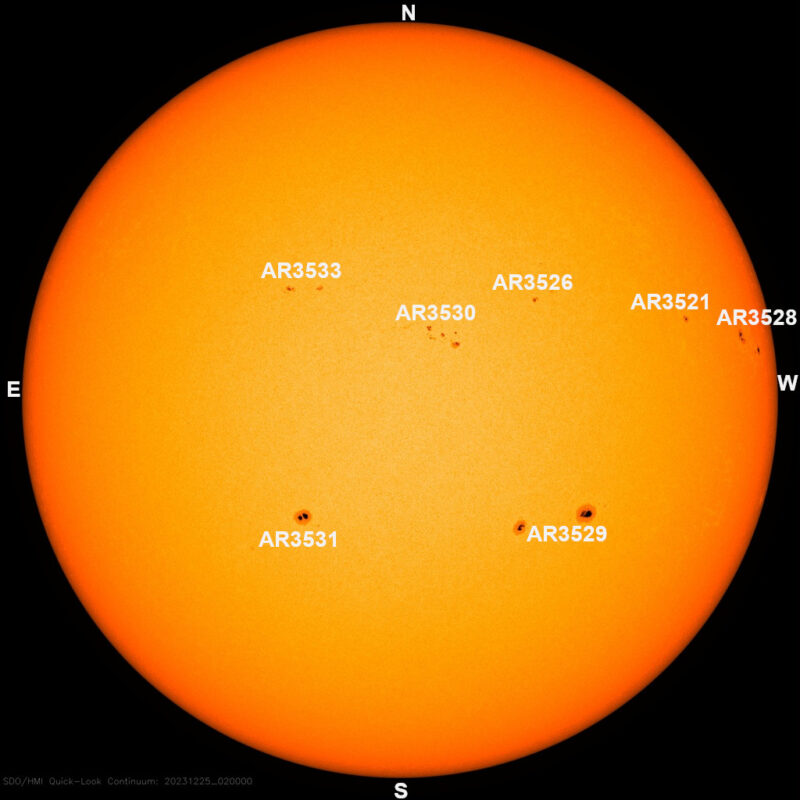
Sun news for December 24, 2023: Something big this way comes
Sun news for December 24, 2023. Farside sunspot! EarthSky’s C. Alex Young and Deborah Byrd produced this video.
The title is a bit of word play from a famous Ray Bradbury story. A big group of sunspots may be on its way! When lots of magnetic fields collect in a small area near the sun’s visible surface, we get a sunspot. And wherever they are on the sun, in our view or not, they create disturbances inside the sun that bounce around. These disturbances can be seen as ripples (waves) in the light coming from the sun that are seen from Earth, even when the ripples originate from the far side. That’s exactly what is happening today. There’s a large magnetic field concentration on the other side of the sun, directly opposite the Earth-facing side. Using a technique akin to seismology on Earth – called helioseismology (“sun” seismology) – allows us to see this large sunspot group. This region could decay before it reaches us, but – given its size – there’s a good chance it’ll survive to greet us soon, in about a week.
Last 24 hours: Sun activity on the near side is low, with 13 C flares between 11 UTC yesterday and 11 UTC today, and no flaring and no big eruptions. The biggest flare was a C3.8 from sunspot region AR3529 at 8:06 UTC on December 24. The sun has eight active regions on its Earth-facing side.

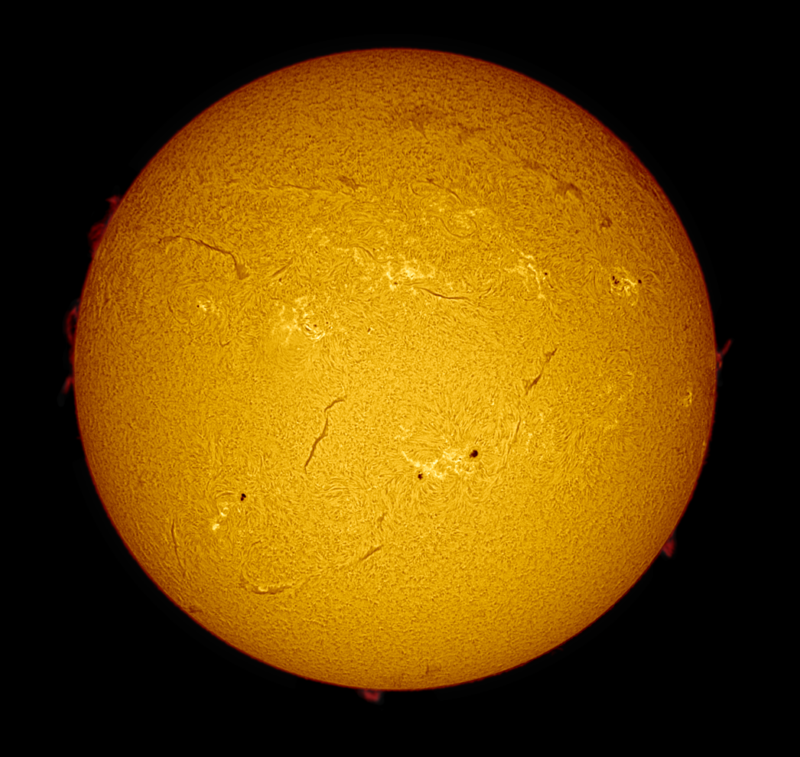
The sun in recent days
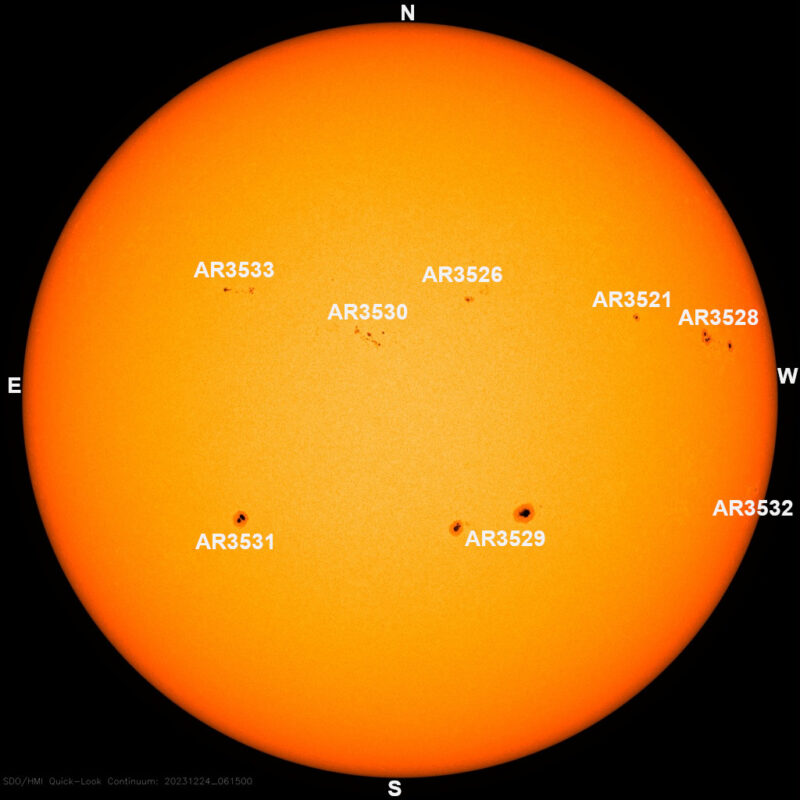
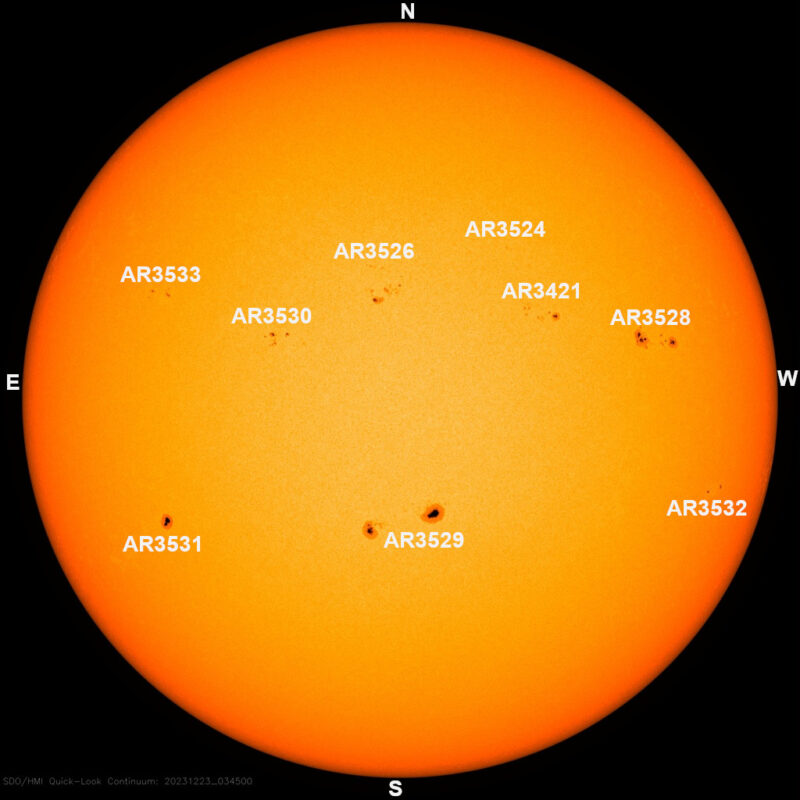

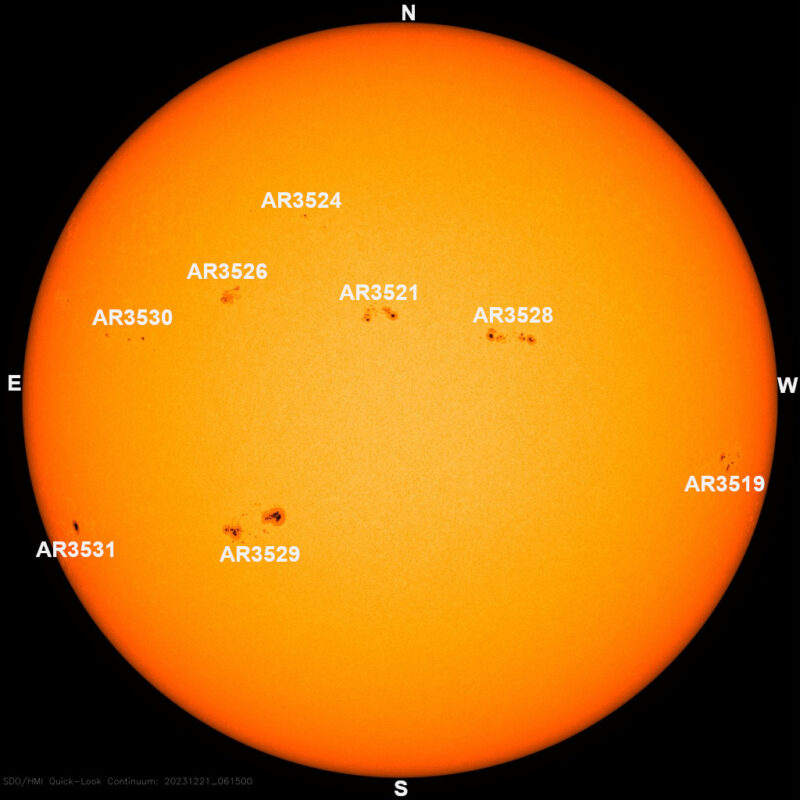
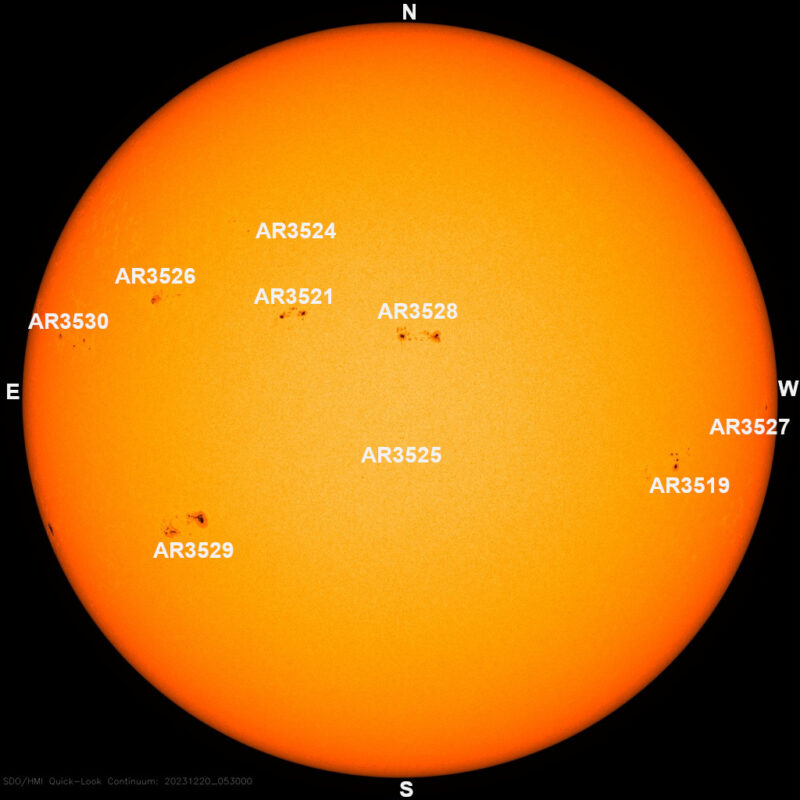

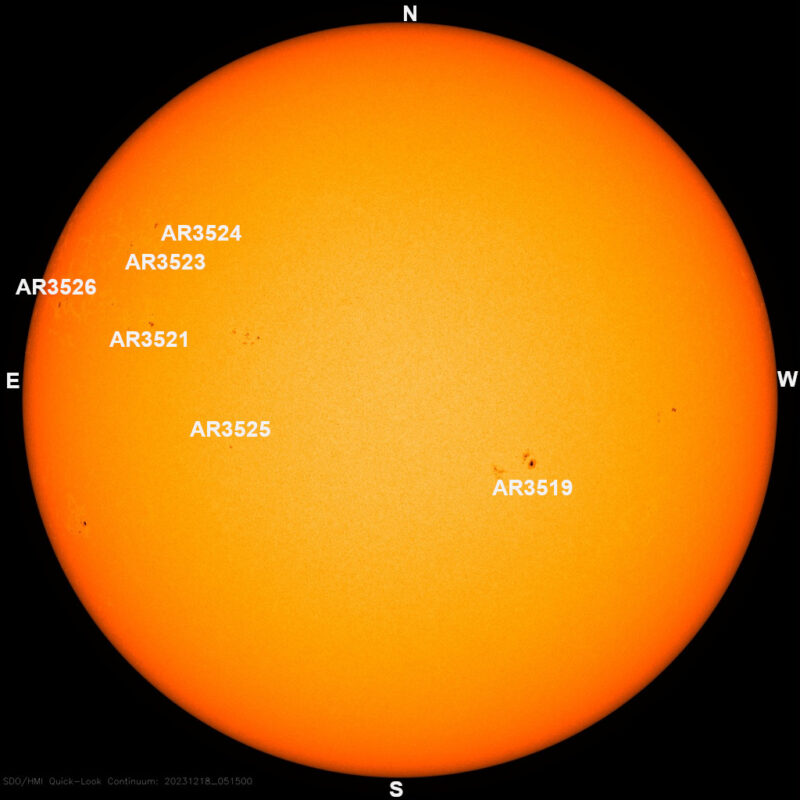
Sun images from our community
Are you a fan of sun news? We invite you all to send us your beautiful recent photos of sunspots and auroras. Naturally, we love receiving your photos! And to those of you who’ve already posted a photo to our community page, thank you.
Submit photos here
View community photos here
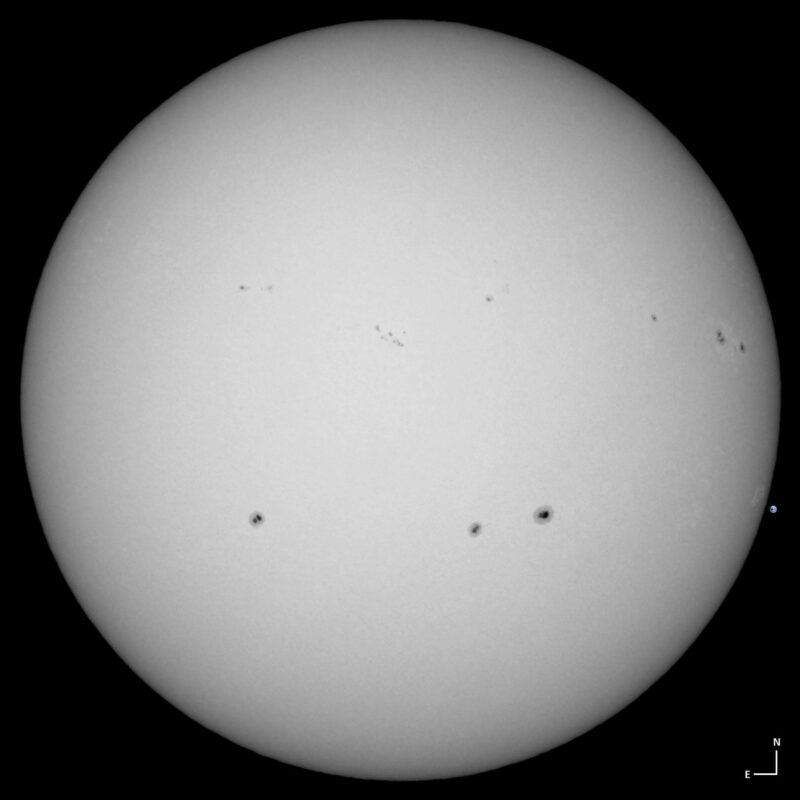
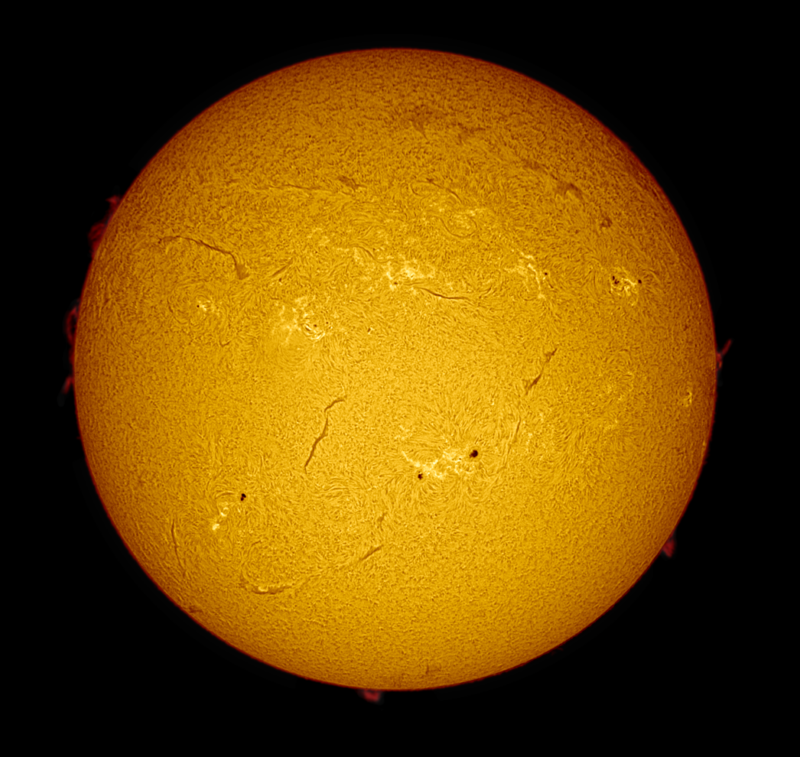

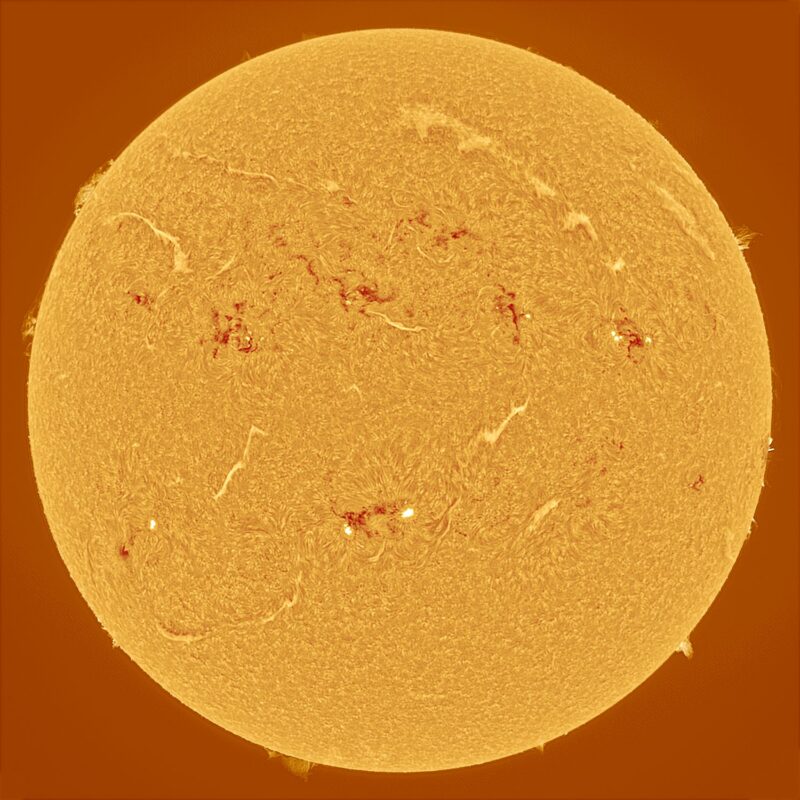

Bottom line: Sun news December 25, 2023. Sun activity is now moderate, thanks to 3 M flares. There were multiple filaments eruptions, including 3 notable ones, across the sun.

